29/9/2022
Hurricane Ian hit Florida USA. As is came in as a massive Category 4 storm with winds of up to 155 miles (250 kilometres) per hour. This is one of the strongest storms to ever make landfall in the state as well as in the whole US. The storm was nearly a category 5. But as climate change increases and the severity of storms and the extreme wind speed increases do we have to think about a new category - a Category 6, which could make this Category 4 storm seem like a gentle breeze. The winds of chance and climate change are moving and we will need to move with it. We will need to prepare the world for more severe storms in the future.
Photo Pixabay
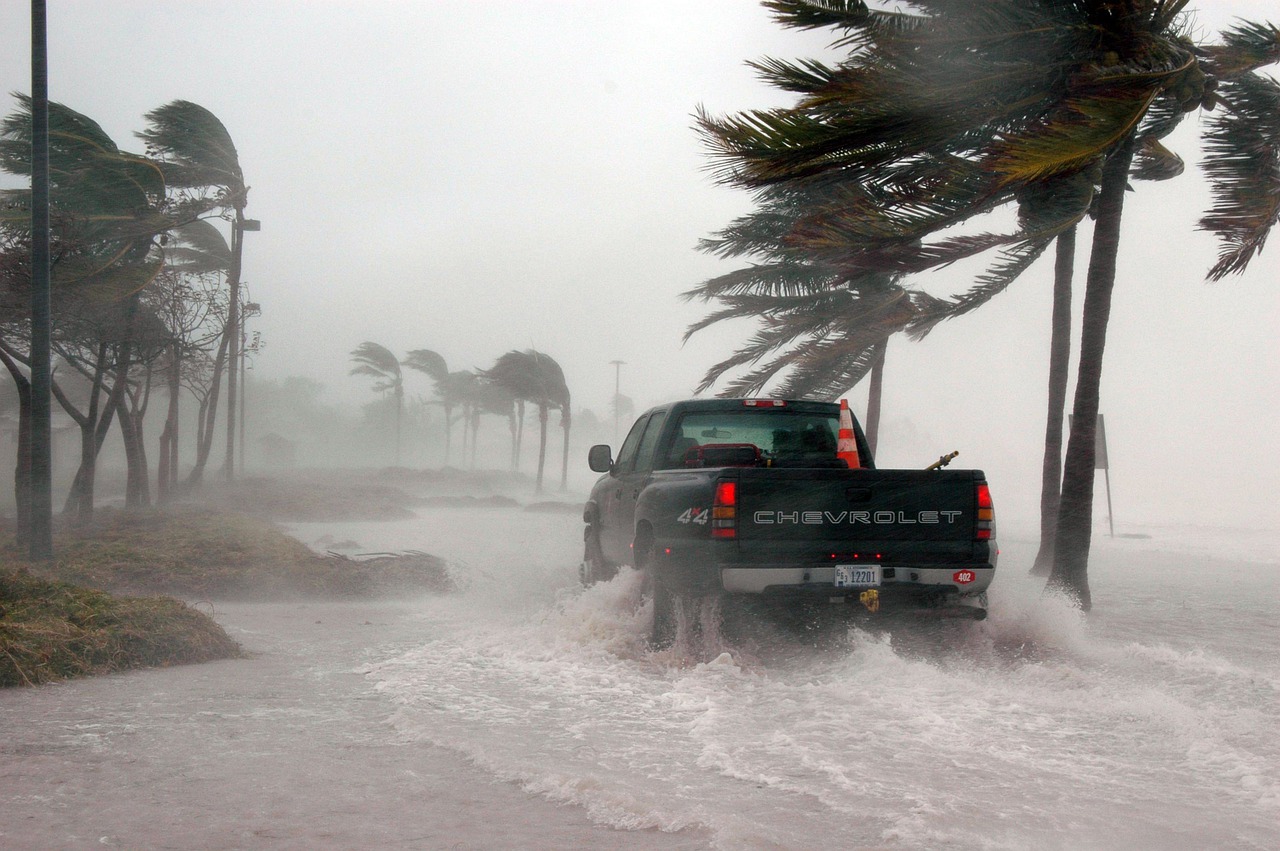
28/9/2022
While plastics remain a ubiquitous part of human life, biosourced and especially biodegradable plastics are a promising solution to alleviate further accumulation of plastic waste in the environment, while still allowing for mass manufacture of plastic products that are now integral to our daily lives. Scientists at the University of California San Diego have developed new biodegradable materials that are designed to replace conventionally used plastic. After proving their polyurethane foams biodegrade in land-based composts, the researchers have now shown that the material biodegrades in seawater. The researchers identified individual microorganisms, from six marine sites around San Diego, CA, that were capable of depolymerizing, metabolizing, and accumulating biomass using these PU foams as a sole carbon source. Shoes, including flip-flops, the world’s most popular shoe, make up a large percentage of plastic waste that ends up in the world’s oceans and landfills. The researchers used blocks of foam that are currently used in the manufacture of shoes.
Photo Pixabay

27/9/2022
EasyJet plans to curb their CO2 emissions by 35% by 2035 and this has been validated by the Science-Based Targets initiative. In a launch event on Monday at easyJet’s Luton airport headquarters, its partner Rolls-Royce displayed a jet engine to be powered by hydrogen. The most significant imminent reduction, of about 15% of current emissions, would come through fleet replacement of conventional fuelled planes with hydrogen. EasyJet has ordered 168 more A320neos from Airbus, and the manufacturer will also retrofit the existing fleet with technology to optimise flight descent and fuel burn. Since 2000, over a 20-year period, EasyJet have reduced their carbon emissions per passenger, per kilometre, by one-third. EasyJet is to stop offsetting carbon emissions by its planes. Other elements of easyJet’s new strategy include using sustainable aviation fuel, more fuel-efficient planes and carbon capture to reach the target.
Photo Pixabay

26/9/2022
Showerheads in California USA use a maximum of 1.8 gallons of water a minute, compared with the 2.5-gallon max allowed by their Environmental Protection Agency. Now the threat of extreme drought has more states considering these restrictions. This water-restricted future is being eased by bath brands themselves, which are investing in an array of efficient showerheads geared at water conservation. Innovations from rocket science has involved modifying nozzle size and number of holes to boost distribution and pressure, and making individual water droplets larger by mixing them with air. After discovering that its most water-conscious users turn off the tap while applying shampoo, Kohler added a knob to let users throttle flow from 1.5 gallons per minute to just 0.5. But there are limits to how much manufacturers can do. No matter how good the showerheads get, Americans need to actually replace their fixtures. Older homes, can use showerheads that use 5 gallons of water per minute.
Photo Pixabay

25/9/2022
Loop Energy™ a designer and manufacturer of hydrogen fuel cells for commercial mobility, has unveiled its landmark 120 kW fuel cell system at IAA Transportation 2022 in Hannover, Germany. This new product is a significant achievement in advancing the global hydrogen industry and the transition of commercial transport industries by achieving fuel cost parity with diesel by up to eight years earlier than previously possible. The 120 kW fuel cell system, the S1200, builds on Loop Energy’s existing technology, to provide an additional efficiency gain of 20% when it generates electricity. The S1200 is designed to deliver up to 60% in net system efficiency, this efficiency enables an electric vehicle powered by a Loop Energy fuel cell to deliver up to 54% fuel to wheel efficiency compared to the typical fuel to wheel efficiency delivered by a diesel engine powered vehicle of 20% to 25%. Loop Energy uses a signature trapezoid plate with narrowing channels for its bipolar plates, which increases gas velocity down the plate to deliver superior performance for fuel efficiency, and power output.
Photo Loop Energy™

24/9/2022
By taking inspiration from biological porphyrins and combining it with the specificity of DNA hybridization, a group of researchers from MIT have developed an improved electrocatalyst platform for CO2 reduction. The addition of single-stranded DNA to the porphyrin-based catalysts improved their stability, and DNA-catalyst conjugates were immobilized on screen-printed carbon electrodes using DNA hybridization with nearly 100% efficiency. Increased turnover frequency (TOF) and catalyst stability were observed with the DNA-immobilized catalysts as compared to the unmodified small molecules. This work demonstrates the importance of taking inspiration from Nature and demonstrates the potential of DNA hybridization as a general strategy for molecular catalyst immobilization.
Photo Pixabay

23/9/2022
Society is increasingly being pressured into shifting towards a more plant-based diet. Many campaigners are claiming that land currently dedicated to grazing could produce much more food if it were instead dedicated to crops. Farms producing grass and other crops to feed sheep and cattle are not as efficient as growing crops and directly feeding the population. But a new study by Rothamsted Research, also involving Scotland's Rural University College, one of the UK's agriculturally-focused higher education institutions has challenged this assumption, and highlighted that some soil types and climates will not easily accommodate conventional arable farming. The Rothamsted-led study focused on the southwest of England, and concluded that the chance of successfully growing winter wheat on fields once used to raise livestock could be as little as 28% in future, as increased rainfall will make field access for machinery impossible. Farms in other parts of the country especially Scotland the conversion rate could be especially low. The study also looked at the implications for soil carbon storage and greenhouse gas emissions if grassland cut three times a year to provide silage, was converted to winter wheat – and found that, whilst the average greenhouse gas emissions from soil growing ryegrass were higher than from the same land converted to wheat, this was compensated for by the greater amounts of carbon stored within the ryegrass.
Photo Pixabay

22/9/2022
Hot foam applications represent a new, smart concept in the area of thermal weed control and are proposed as an evolution of simple hot water or steam applications. The change lies in the additional use of biodegradable foaming agents . The advantage of foam is that it isolates the weed from the ambient air at the time of treatment and transfers all the heat energy to the plant tissues instead of escaping into the atmosphere. Foamstream ® machines (WeedingtechTM Ltd., London, UK) enable the practical implementation of this herbicide–free weed control option that overcomes several of the drawbacks associated with the use of synthetic herbicides and conventional thermal weed control methods and contact bioherbicides. The application of hot foam can also be a smart, effective weed control method in olive groves and orchards, providing an alternative to glyphosate and being more effective compared to other non–chemical methods.Hot foam: Evaluation of a new, non-chemical weed control option in perennial crops Nikolaos Antonopoulos et al Smart Agricultural Technology Volume 3, February 2023, 100063
Photo Thomas Frey/picture alliance via Getty Images
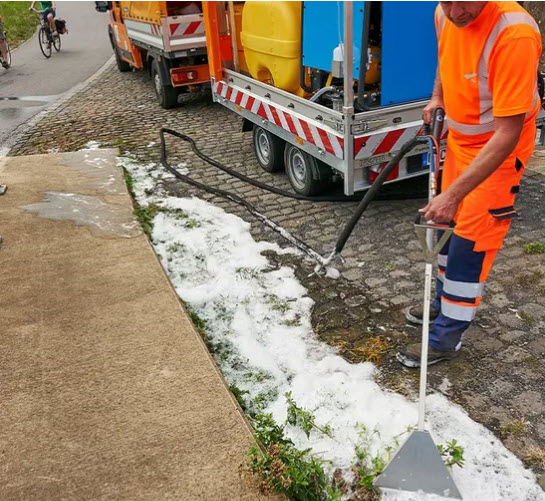
21/9/2022
The UK may have decided not to tax the heavily profit making oil and power companies, but the United Nations General secretary called on the world to tax these companies heavily to pay for all the effects on climate change. António Guterres said that “polluters must pay” for the escalating damage caused by heatwaves, floods, drought and other climate impacts, and demanded that it was “high time to put fossil fuel producers, investors and enablers on notice. Today, I am calling on all developed economies to tax the windfall profits of fossil fuel companies,” Guterres said in a speech to the UN general assembly on Tuesday 20th September . “Those funds should be redirected in two ways – to countries suffering loss and damage caused by the climate crisis and to people struggling with rising food and energy prices. Our world is in big trouble. Let’s have no illusions. We are in rough seas. A winter of global discontent is on the horizon, a cost-of-living crisis is raging, trust is crumbling, inequalities are exploding and our planet is burning, We have a duty to act and yet we are gridlocked in colossal global dysfunction. The international community is not ready or willing to tackle the big dramatic challenges of our age.”
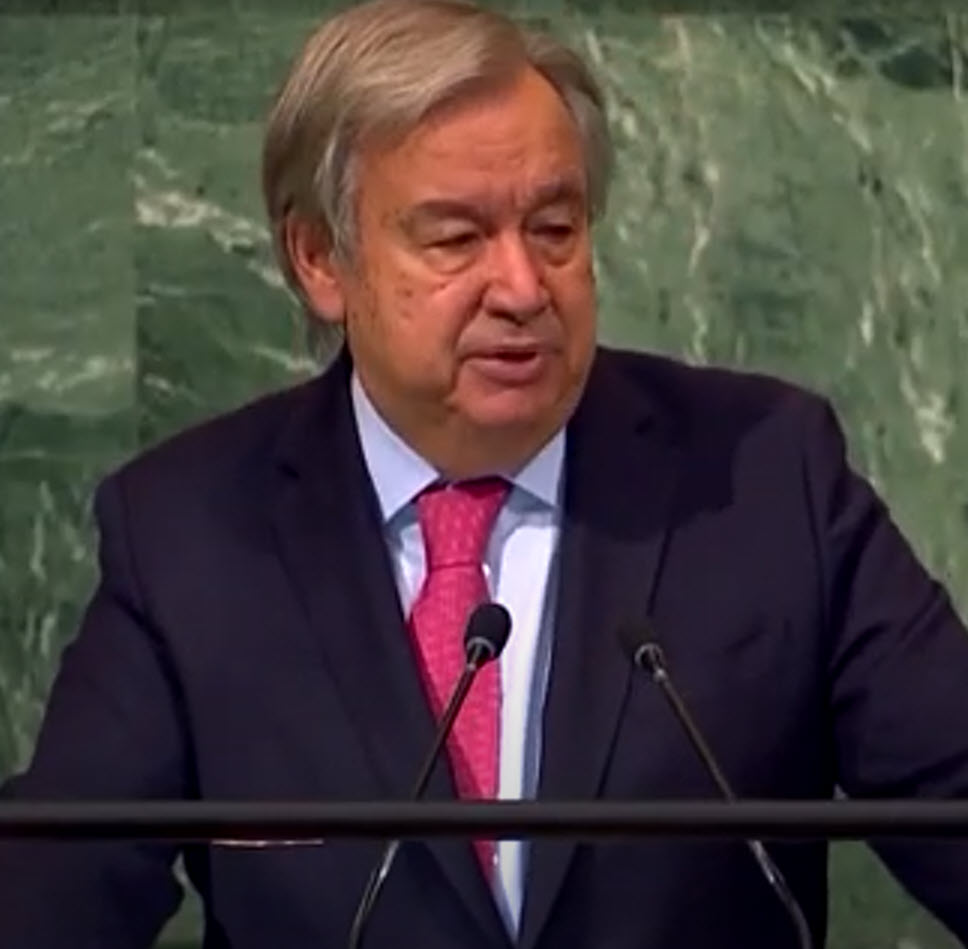
20/9/2022
It's not just the droughts and the floods that are affecting the costs of the foods in super markets, but climate change itself. Foods that could be grown in one place because of the climate are just not becoming viable any more. One such example are wines. Once grown in France, with the warming climate the UK is becoming a great place to grow vines. The crops are set to fail and become more expensive unless other places can take on this crop. Until this happens crops will become more scarce and more expensive and there could be significant shortages. and this doesn't take into consideration all the problems in Ukraine by the continual attack from the Russians. If global temperatures reach the 1.5C rise then about 8% of the worlds farmland could become unusable as farmland. This will also have a knock on effect on livestock and fisheries. 1.5C rise is coming and there will be worldwide food shortages.
Photo Pixabay
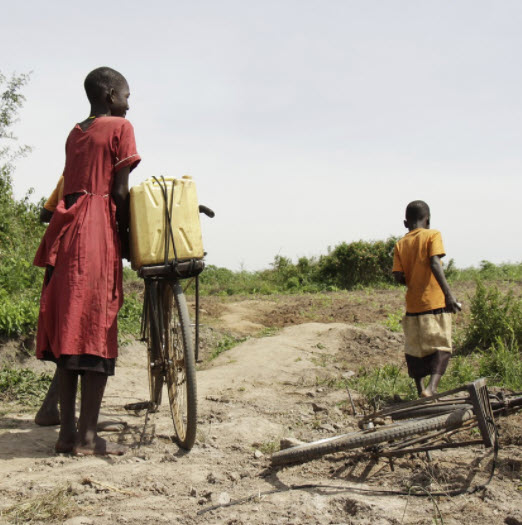
19/9/2022
South Australia – already leading the world with its share of wind and solar – is poised to become the first grid of its size to operate without synchronous generation within the next few years, according to a new planning document from the market operator.South Australia leads the world with the penetration of wind and solar in its grid, and has averaged more than 64% over the last 12 months.It regularly reaches levels where wind and solar produce more than 100% of state demand – in fact it set a new record of 146% of state demand from wind only on Wednesday morning – but this excess is exported to Victoria through its transmission links.Even when wind and solar have produced much more electricity than is needed in the state at any one time, it has always had to have some synchronous generators, and always gas fired generators in South Australia, running to ensure some of the principal grid services can still be delivered.
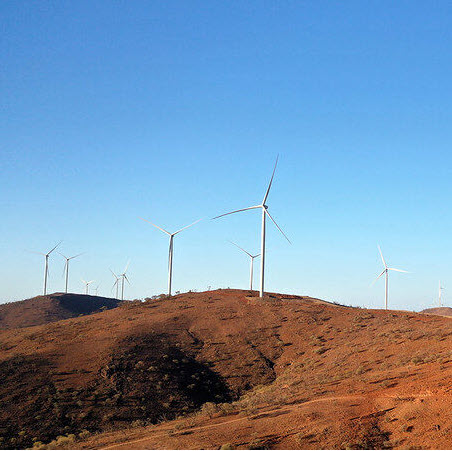
18/9/2022
A last few days of the summer sun as the Autumn starts to
set in. As the evenings draw to a close
We start to see less hours of sunshine on the solar panels
and as the sun also sinks lower in the sky the angle of the sun on the solar
panels also decreases, allowing less sun light to be absorbed. So does it make
sense for the winter months to have solar panels on the side of the house
rather than the roof. In those days sunny days of winter it would certainly
make a difference at my house. Councils allow solar panels on the roof, but are
not interested in allowing the panels on the side of the house as it ruins the
look of the street. Panels that look like tiles or bricks could make successful
inroads here.

17/9/2022
Stratospheric aerosol injection (SAI) is a prospective climate intervention technology that would seek to abate climate change by deflecting back into space a small fraction of the incoming solar radiation. Subpolar deployment would quickly envelope the poles as well and could arrest or reverse ice and permafrost melt at high latitudes. This would yield global benefit by retarding sea level rise. Given that effective SAI deployment could be achieved at much lower altitudes in these regions than would be required in the tropics, it is commonly assumed that subpolar deployment would present fewer aeronautical challenges. An SAI deployment intended to reduce average surface temperatures in both the Arctic and Antarctic regions by 2 °C is deemed here to be feasible at relatively low cost with conventional technologies. However, we do not find that such a deployment could be undertaken with a small fleet of pre-existing aircraft, nor that relegating such a program to these sparsely populated regions would obviate the myriad governance challenges that would confront any such deployment. Nevertheless, given its feasibility and potential global benefit, the prospect of subpolar-focused SAI warrants greater attention.
Wake Smith, Umang Bhattarai, Douglas G MacMartin, Walker Raymond Lee, Daniele Visioni, Ben Kravitz, Christian V Rice. A subpolar-focused stratospheric aerosol injection deployment scenario. Environmental Research Communications, 2022; 4 (9): 095009 DOI: 10.1088/2515-7620/ac8cd3

16/9/2022
Green hydrogen and derived electro-fuels are attractive replacements for fossil fuels in applications where direct electrification is infeasible. While this makes them crucial for climate neutrality, rapidly scaling up supply is critical and challenging. In a Recent paper published in Nature Energy a team of researchers from Potsdam-Institut für Klimafolgenforschung show that even if electrolysis capacity grows as fast as wind and solar power have done, green hydrogen supply will remain scarce in the short term and uncertain in the long term. Despite initial exponential growth, green hydrogen is likely to supply less than 1% of final energy until 2030 in the European Union and 2035 globally. By 2040, a breakthrough to higher shares is more likely, but large uncertainties prevail. Both short-term scarcity and long-term uncertainty impede investment in hydrogen end uses and infrastructure, reducing green hydrogen’s potential and jeopardizing climate targets. However, historic analogues suggest that emergency-like policy measures could foster substantially higher growth rates, expediting the breakthrough and increasing the likelihood of future hydrogen availability.
Adrian Odenweller, Falko Ueckerdt, Gregory Nemet, Miha Jensterle, Gunnar Luderer (2022): Probabilistic feasibility space of scaling up green hydrogen supply. Nature Energy
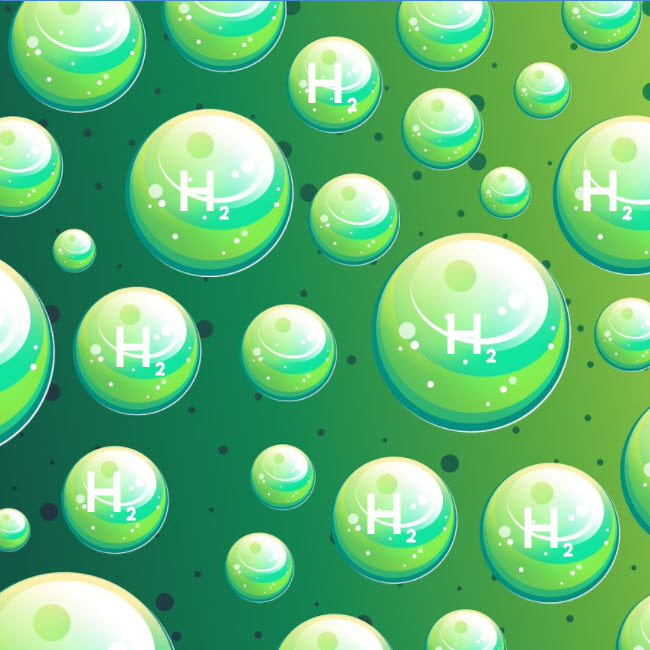
15/9/2022
Communities across Europe are increasingly making, consuming, and selling their own energy. According to the latest data, 2 million Europeans are now involved in 7,000 local energy communities across the continent, with more happening every day. As heat pumps replace gas boilers and electric vehicles supplant internal combustion engines, highly centralized electricity production and distribution systems, the power stations and grids will simply not be able to adequately handle the increase in demand for electricity. There is an urgent need to decentralize more and more, produce and consume more energy locally from sources like solar and wind and boost storage and smart solutions for efficient energy management. One project, Grunneger Power, in the Netherlands, has 2,500 members. It was created a decade ago by local people frustrated by the slow pace of the transition to renewable energy. The cooperative owns two solar parks with a total of 10,000 solar panels as well as smaller sites on homes and buildings across the city. The electricity generated is provided to the members of the cooperative with any excess sold to a sustainable energy provider. Any profits are invested back into the cooperative.
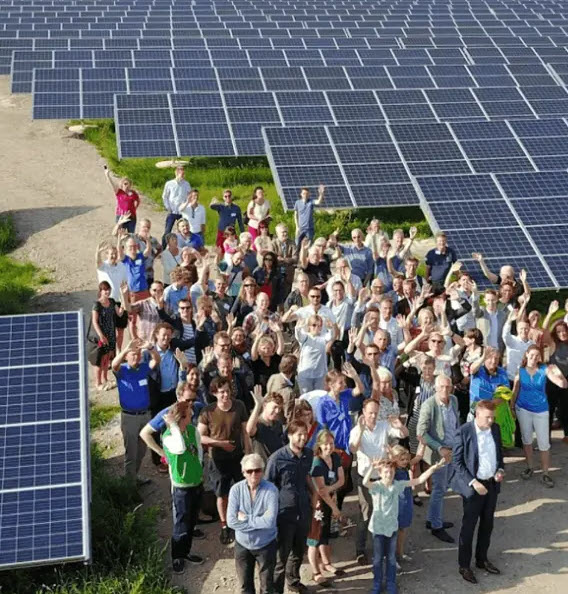
14/9/2022
I was having a look at what some companies are doing in the eco world and I was very impressed when I came across tesa. They now have a large number of 100% sustainable products much made from recycled materials bearing the tesa ecoLogo®. They use recycled resources in manufacturing and a natural adhesive free from solvents. tesa is the first adhesive tapes manufacturer to be awarded the coveted DIN-CERTCO certification seal. DIN-CERTCO is an independant certification organisation which belongs to the TUV Rheinland - German technical control board. Sustainability has been one of the key strategic targets at tesa for a number of years and this is very evident from their products and marketing.
Image tesa

13/9/2022
Researchers at the University of Illinois Chicago has discovered a way to convert 100% of carbon dioxide captured from industrial exhaust into ethylene, a key building block for plastic products. C2H4 has a prominent global market size at $230 billion, the majority of which is attributed to its use in polymer industries for synthesizing the most prevalent plastics such as polystyrene, polyvinyl chloride, and polyethylene. The process can convert up to 6 metric tons of carbon dioxide into 1 metric ton of ethylene, recycling almost all carbon dioxide captured. Because the system runs on electricity, the use of renewable energy can make the process carbon negative. In UIC's approach, an electric current is passed through a cell, half of which is filled with captured carbon dioxide, the other half with a water-based solution. An electrified catalyst draws charged hydrogen atoms from the water molecules into the other half of the unit separated by a membrane, where they combine with charged carbon atoms from the carbon dioxide molecules to form ethylene. with 4% solar-to-ethylene and 10% solar-to-carbon efficiencies, Cell Reports Physical Science (2022). https://doi.org/10.1016/j.xcrp.2022.101053
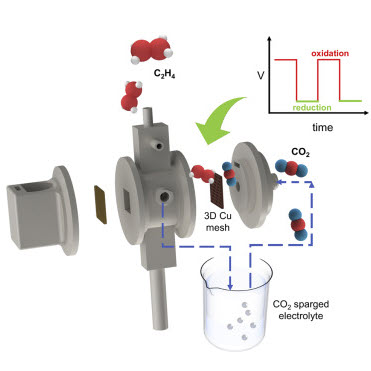
12/9/2022
CO2 and methane can be turned into valuable products. But until now the catalysts required for such reactions quickly lose their effectiveness. Researches at Technische Universität Wien has now developed more stable alternatives. The problem has been that a layer of carbon quickly forms on these catalysts - this is called "coking" - and the catalyst loses its effect. a new approach was taken: tiny metallic nanoparticles were produced on perovskite crystals through special pre-treatment. The interaction between the crystal surface and the nanoparticles then ensures that the desired chemical reaction takes place without this coking effect. Dry Reforming of Methane has great potential to contribute to current efforts towards a sustainable energy future. Beyond that, this catalytic reaction turns two of Earth’s most abundant greenhouse gases, CO2 and CH4, into valuable synthesis gas, thus mitigating global warming.
Photo Technische Universität Wien
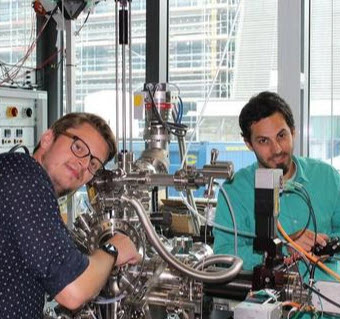
11/9/2022
Researchers in South Korea have created a new catalyst that can replace the very expensive platinum that is currently used in fuel cells. A piece of fabric is carbonised to that it will conduct electricity then it is placed in a nickel solution and electroplated. This effectively produces hydrogen. In a futher process the material is then coated with iron and colbalt on top if the nickel and this effectivey allows oxygen to be made. The material is stable and very cheap to manufacture.
Photo University South Korea.

10/9/2022
Ammonia, a compound of nitrogen and hydrogen (NH3) that is commonly known for its use as a household cleaner, could be used as an alternative fuel for vehicles or as a potential energy storage medium. However, traditional methods of producing ammonia from nitrogen oxide (NO) on a large scale are not energy efficient, and some of the more recent efforts to produce ammonia from an NO reduction reaction have low ammonia yields. Now, researchers from Tsinghua University Press in China have developed an eco-friendly, energy-efficient method for producing ammonia through an electrocatalytic NO reduction reaction. The researchers explored NO reaction reduction (NORR) to ammonia using the synthesis of nanoporous vanadium nitride (VN) film supported on carbon fiber cloth (written as np-VN/CF). They tested the new method, the novelty of which lies with using existing materials of VN film in a new way and for a new purpose, with a zinc-nitrogen oxide battery.
Defeng Qi et al.; High-efficiency electrocatalytic NO reduction to NH3 by nanoporous VN; Nano Research Energy; 2022Photo Nano Research Energy, Tsinghua University Press
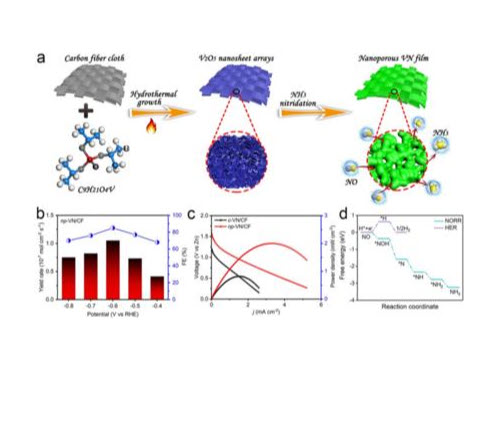
9/9/2022
Although, Her Majesty, Queen Elizabeth II, said publicly very little on Climate Change, her actions and initiatives spoke much louder than words. She leaves us a legacy of thousands of tree planted in her name. Her Majesty, loved nature and perhaps a more simple way of life. At Buckingham Palace there are hives which provided her with honey and she obtained a lot of her food from locally sourced places. The Queen stopped wearing fur and this act alone changed much of the world of fashion. Other members of the Royal family have been more associated with environmentalism, with Prince Philip being president of the World Wildlife Fund; Prince Charles championing environmentalism and organic farming; Prince William founded the environmental Earthshot prize. Her Majesty, the Queen held dozens of patronages and links with environmental organisations, from African Parks to Botanic Gardens.
Photo Credit: Chris Jackson/PA

8/9/2022
The ocean plays a critical role in modulating the Earth’s climate system and over the last 50 years it has taken up over 89% of the excess energy due to greenhouse warming. Since the early 1990s, the rate of ocean warming has likely doubled. However, our current understanding of the spatial distribution of ocean heat uptake and storage is limited, not least because of sparse observations with large uncertainties, especially in sea-ice covered regions and the deep ocean. Fully coupled atmosphere-ocean general circulation models and ocean-sea ice models simulate a complete representation of the global ocean and are now increasingly used to assess the ocean heat content evolution. Experiments done emphasise that recent trends in Southern Ocean surface winds, surface air temperature and radiation have driven almost all of the globally integrated ocean warming of the past half century. Increased observational coverage over the Southern Ocean is therefore key to reconcile global surface heat fluxes, ocean heat uptake and heat content changes, as well as building increased confidence in climate models and climate change projections for the coming decades.
Image
Maurice F. Huguenin
,
Ryan M. Holmes &
Matthew H. England
Nature Communications
volume 13, Article number: 4921 (2022) https://www.nature.com/articles/s41467-022-32540-5

7/9/2022
Researchers at the Max Planck Institute for Chemistry have identified the Eastern Mediterranean and the Middle East to be a climate change hot spot, and have concluded that the region is warming almost twice as fast than the global average, and more rapidly than other inhabited parts of the world. For the remainder of the century, projections based on a business-as-usual pathway indicate an overall warming of up to 5°C or more, being strongest in the summer, and associated with unprecedented heatwaves that will be societally disruptive. The region will experience rainfall shortages that compromise water and food security. Virtually all socio-economic sectors are expected to be critically affected, with potentially devastating impacts on the health and livelihoods of the 400 million people. The report suggests strongly increasing severity and duration of heatwaves, droughts and dust storms, and torrential rains which are expected to trigger flash floods. The assessment also comprises a discussion of atmospheric pollution and land-use change in the region, considering urbanization, desertification and forest fires, and includes recommendations for possible climate change mitigation and adaptation measures.
G. Zittis, M. Almazroui, P. Alpert, P. Ciais, W. Cramer, Y. Dahdal, M. Fnais, D. Francis, P. Hadjinicolaou, F. Howari, A. Jrrar, D. G. Kaskaoutis, M. Kulmala, G. Lazoglou, N. Mihalopoulos, X. Lin, Y. Rudich, J. Sciare, G. Stenchikov, E. Xoplaki, J. Lelieveld. Climate Change and Weather Extremes in the Eastern Mediterranean and Middle East. Reviews of Geophysics, 2022; 60 (3) DOI: 10.1029/2021RG000762
Photo Pixabay
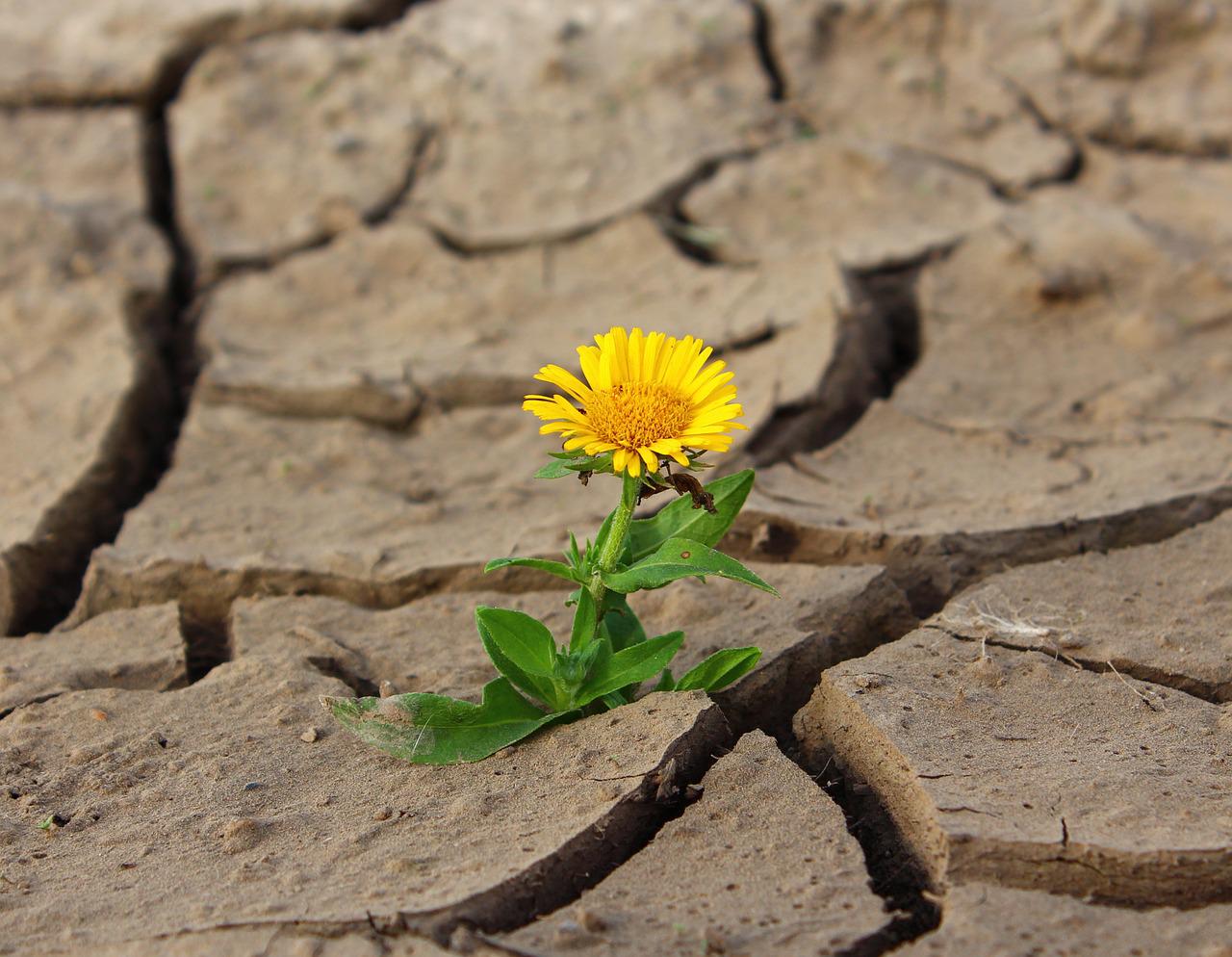
6/9/2022
With Nord Stream 1 effectively shutdown until sanctions are lifted, the Gas market has gone chaotic. But this isn't such bad news. Instead of thinking a few years ahead about renewables countries are thinking about it now. If we had more wind power then this would not be happening or happening as badly. So we know things are bad and they will get worse, but what is effectively driving the cost of living crisis is our reliance on Gas. It will be painful and expensive, but over the next few years far more renewable energy sources will come on line, more wind power, more solar and hopefully more wave power (we are an island after all). Other sources are renewable energy will be looked at and found acceptable and we and most other countries will go renewable. With a new PM the UK has the opportunity to change direction to a renewable future that will secure more jobs, boost the economy and save us all from climate change.
Photo Pixabay
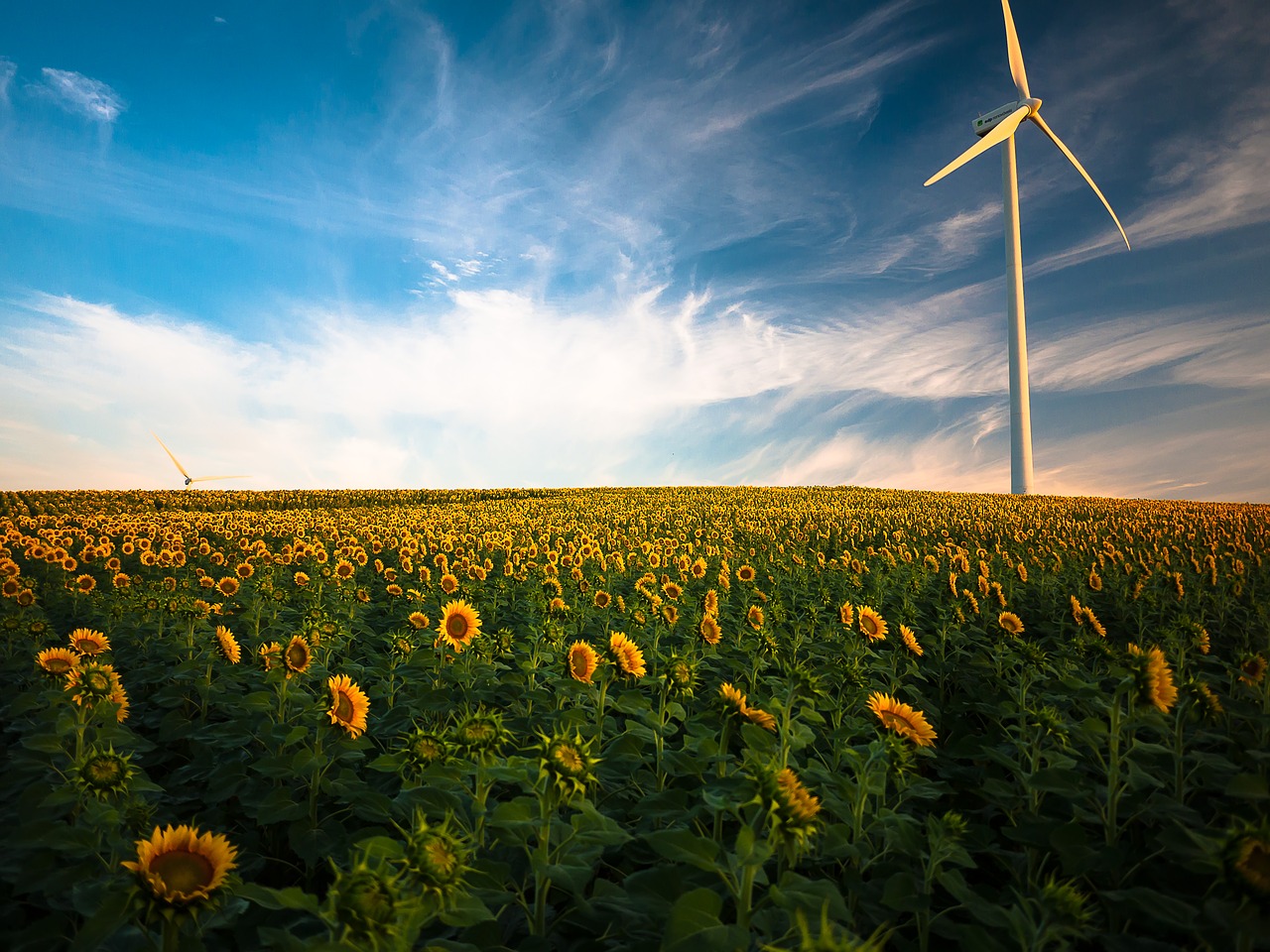
5/9/2022
CO2 and methane can be turned into valuable products. But there is a problem with the catalysts required for this: They end up being covered in a layer of carbon, losing their effectivity. Researchers at Vienna University of Technology have now created a catalyst with fundamentally different properties: They have used perovskites, which are crystals containing oxygen, which can be doped with various metal atoms, inserted, such as nickel or cobalt, into the perovskite -- metals that have also been used in catalysis before. special pre-treatment of the crystal with hydrogen at around 600 °C allows the nickel or cobalt atoms to migrate to the surface and form nanoparticles there. The size of the nanoparticles is crucial: Success has been achieved with nanoparticles with a diameter of 30 to 50 nanometres. The desired chemical reaction then takes place on these tiny grains, but at the same time the oxygen contained in the perovskite prevents the formation of carbon nanotubes.
Photo Pixabay

4/9/2022
Beavers’ construction activities have helped to maintain an area of wetland that they’ve created on farmland in the Devon Countryside. Around this area in the drought the land is all dry, but the area where the beavers are is still green. The beavers have brought measurable benefits to people and wildlife, alleviating flooding, reducing pollution and boosting populations of fish, amphibians and other wildlife, but although this is true in time drought, in times of flooding then many of the flood plains will again flood and this will damage a significant amount of farmland. The beaver dams do slow down the rate at which the water leaks down the valleys and this can alleviate and mitigate floods. There is still a large amount of argument between the farmers who want the maximum amount of land to work on and the beaver who can manage and restore the wetlands.
Photo Clinton Devon Estates

3/9/2022
Pink hydrogen is generated through electrolysis powered by nuclear energy. Nuclear-produced hydrogen can also be referred to as purple hydrogen or red hydrogen. Hydrogen can be manufactured in numerous ways. The most referenced process is electrolysis, which uses electricity to split water molecules into hydrogen and oxygen. Electrolysis is the process used to manufacture green hydrogen, where electrolyzers are supplied by companies and electricity is supplied by a wind or solar farm. The chemical reactions needed to manufacture hydrogen require significant amounts of energy. Whereas methods to produce green hydrogen must rely primarily on energy in the form of electricity ("cold electrolysis"), nuclear power plants can leverage waste energy from the heat they produce. The very high temperatures from nuclear reactors could be used in other hydrogen productions by producing steam for more efficient electrolysis or fossil gas-based steam methane reforming. Nuclear power plants could use off-peak electricity to manufacture hydrogen more efficiently and in greater volumes than renewable energy, then sell the supply to existing industrial customers for an additional revenue stream. A single 1,000-megawatt reactor could produce nearly 500 metric tons of hydrogen per day using effectively waste heat.
Image Pixabay

2/9/2022
The Spanish government plans to allocate 127.5 million euros to increase the desalination capacity in the south-east of the country by expanding five of the 11 main marine desalination plants in the autonomous communities of Valencia, Murcia and Andalusia. The water shortage situation in some areas of Spain is so serious that some municipalities have to rent small portable desalination plants. Spain is the top country in Europe and the fifth in the world by capacity for desalinated water production, which can potentially provide 34 million inhabitants with water, the Spanish Desalination and Reuse Association said. So far, 68 marine desalination plants have been installed in Spain, including on the Canary and Balearic Islands. The plants use reverse osmosis technology with conversion rates between 40% and 50%, with the amount of fresh desalinated water and brine effluent being similar. The brine is discharged into the Mediterranean coastal waters, causing a potentially harmful impact on the marine environment.
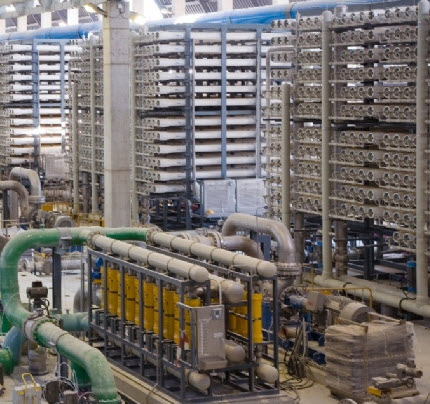
1/9/2022
What a great month August was for Solar Power generation. Typical August's are cloudy and wet, but this year we were met with loads of sunshine, which managed us the maximum August Sunshine since our records began 11 years ago when we installed the solar panels. Since this date each day we have recorded the amount of power collected by our solar panels. We have added on more panels but for continuities sake we have kept measuring the power output of the first 5 panels (in red) for the past 11 years which gives a great insight to how the climate is truly changing.
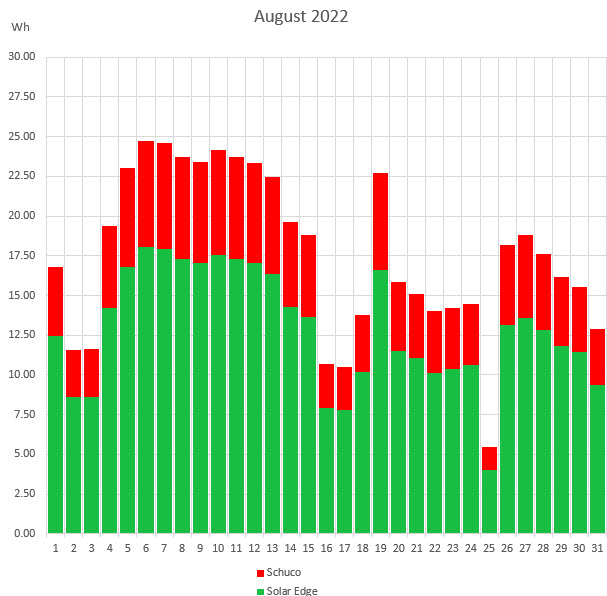
All time highest record for August. We had a really great start to the month for sunshine and even the bad days were quite good. View Data
New ways, New technology